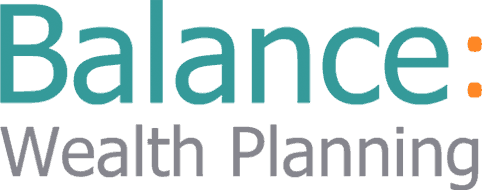
With the start of the new tax year on April 6th, it’s essential that high earners have a tax-efficient approach to ensure wealth preservation. There are various strategic tax planning methods, such as maximising pension contributions and tax-efficient investing. Let’s look at how you can avoid certain tax traps so you can start the new financial year with peace of mind.
The cost of poor tax planning
Many high earners are unknowingly overpaying taxes by missing out on crucial allowances, tax reliefs, and tax-efficient investment opportunities. Poor tax planning leads to thousands of pounds lost each year. This is money that could be invested, saved, or used to enhance people’s lifestyles. Government data recently reported that £1.3 billion of pension tax relief hasn’t been claimed over the past 5 years which is a significant loss of retirement savings.
When it comes to pensions, higher-rate and additional-rate taxpayers need to claim additional pension tax relief through their self-assessment tax returns. If you want to preserve your wealth and avoid unnecessary tax liabilities, then you need to use your pension allowances.
However, by understanding and utilising all available strategic tax-planning approaches, you can significantly reduce your tax bill and keep more of your hard-earned wealth.
Be aware of income thresholds and tax traps
High-income thresholds can lead to unexpected tax consequences for families. For example, if you earn above £100,000, there’s a gradual reduction of your personal allowance, which increases your marginal tax rate. By making pension contributions or charitable donations, you could reduce your net income and keep your personal allowance.
Tax-efficient pension contributions
Contributing to your pension is an effective way to reduce your taxable income. The standard annual allowance for pension contributions is £60,000 for the current tax year (April 2025). However, this allowance is tapered for individuals with a threshold income over £200,000 or an adjusted income over £260,000. In these instances, the annual allowance decreases by £1 for every £2 of income above £260,000, down to a minimum of £10,000.
If you have unused annual allowances from the previous three tax years, you can use the ‘carry forward’ rule to make larger pension contributions in the current tax year. However, you need to have been a member of a UK-registered pension scheme during those years. This pension strategy can help restore your personal allowance and reduce your taxable income. For more guidance, see our blog Are you missing out on pension tax relief?
Utilise Individual Savings Accounts (ISAs)
ISAs offer a tax-efficient way to save and invest. Until 2030, you can invest up to £20,000 per tax year in ISAs, and any income or interest generated within the ISA is tax free. Early investment in the new financial tax year will allow more time for potential growth.
Manage Capital Gains Tax (CGT) liabilities
By utilising the current CGT allowance, you can strategically realise gains up to this limit each year, helping to minimise or avoid CGT liabilities. You could consider transferring assets between your spouse or civil partner to combine your individual allowances, which could double the tax-free amount.
Tax efficient investments
For those who have maximised their pension and ISA contributions, you could look at investing in a Venture Capital Trust (VCT) or Enterprise Investment Scheme (EIS). Both of these can offer tax advantages, subject to certain conditions and holding periods. However, these investments are often high risk, so they should be considered carefully – get financial planning advice before investing. There may be other tax-efficient investments to consider.
Consider Charitable Giving
Donating to registered charities under the Gift Aid scheme can help you reduce your taxable income. For every £1 donated, the charity can claim an additional 25p from the government. Higher-rate taxpayers can claim relief on the difference between the basic and higher rates of tax. This not only helps to support philanthropic causes, but it also provides valuable tax benefits to higher and additional rate taxpayers.
Top 100 financial adviser firms
A proactive and strategic tax planning is essential for high earners aiming to preserve their wealth and minimise their tax liabilities. By maximising your pension contributions, utilising ISAs and being aware of tax allowances, you can effectively reduce your tax burden.
Tax-efficient financial planning helps you to avoid costly mistakes. As a higher rate taxpayer, neglecting your tax planning could lead to significant financial losses each year. Instead, your hard-earned funds could be invested, saved, or used to enjoy your current lifestyle.
As one of the Top 100 financial planners in the UK, Balance: Wealth Planning has the expertise to help you maximise your tax allowances. Pension tax relief can be complicated. Our experienced financial planners regularly advise high earners on suitable tax-planning strategies. We’ll make sure you’re utilising any entitlements and tax-efficient investments.
If you’re a higher rate or additional rate taxpayer and you need help with tax planning, get in touch to speak to our team.
Sources:
https://moneyweek.com/personal-finance/605732/high-earners-missing-pensions-tax-relief
https://www.gov.uk/tax-on-your-private-pension/annual-allowance
https://taxqube.co.uk/smart-strategies-for-high-earners-to-optimize-tax-efficiency-in-the-uk/
https://www.moneyhelper.org.uk/en/pensions-and-retirement/tax-and-pensions/tapered-annual-allowance

